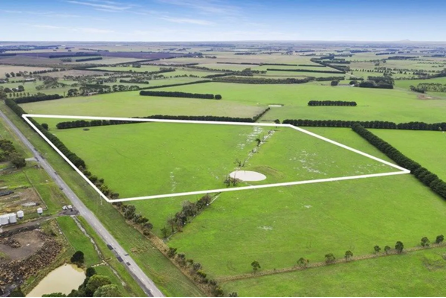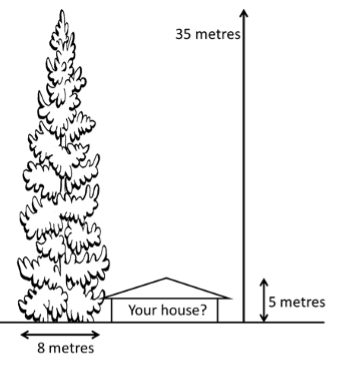Planting lines of cypress trees is a common enough practice in south-east Australia and rarely attracts comment. But I do often reflect on their impact in the landscape while driving about, and I have to admit up front of having a long-held, and seriously jaundiced, view of cypress plantings. But now I have done some research on the topic, I find that my prejudice seems to be completely justified, perhaps even too mild.
Since childhood, when we would play in a large cypress in the churchyard near my grandmother's house, their grey sterility and dead ground beneath has given me the creeps. This view was reinforced by a Greek fable which warned me that if you fall asleep under a cypress, the roots will suck your brains out. As a grown-up, my problem with cypress is the way they transform our landscapes. Finding myself without an image of cypress windbreaks for this article, I typed in "rural Australian landscape" and in the images displayed there was not a cypress to be seen; they were all eucalypt-adorned. Which underlines my view that they denature our distinctive Australian landscape, rendering it sterile and largely bereft of its native wildlife.
The most widely planted cypress is an accidental cross between Monterey cypress and Nootka cypress. This sterile hybrid (x Cupressocyparis leylandii), which appeared in a UK garden, is propagated by cuttings and is known as Leyland Cypress or simply Leylandii. It is planted all over the planet. Its dense habit and fast growth are the reasons it is both liked and hated. Leylandii can grow up to a metre a year when young and 40 m tall. It is commonly used for hedging, but is frequently allowed to grow to its full height.

Cypress windbreaks seems to appeal to the real estate market. This block for sale is described as "..clear and clean with a gentle fall and lovely aspects and surrounds."
The reason for its use, is the same as the reason behind the estimated 17,000 disputes over high hedges (mostly Leylandii) In the UK in 2005. These disputes have led to violence and at least one case of murder. The trees steal views, soil nutrients and sunlight, and can be used as 'spite hedges' when planted by neighbours with a grudge. Australia has similar problems with disputes, and councils such as Wingecarribee have been working to regulate the planting of hedges, but to date it is a case of negotiating with your neighbours or go to the Land and Environment Court. They can be pruned, but any lapse in the pruning regime can lead to out-of-control growth and much expense to remediate or remove.

Although often planted as a windbreak, cypress is too dense for this purpose and create turbulence on the lee side. Effective windbreaks are semi-permeable and slow the wind moving through it, rather than pushing it over the top. Stock access is a problem when the lower limbs are grazed and pruned, creating large ground-level gaps which the wind whistles through. Pregnant cows in their last trimester can abort if they eat the foliage.
I know that people sometimes shy away from planting the local eucalypts because of dieback problems, but what about cypress canker which kills a wide range of conifers, including Leylandii? It is caused by the fungus Seiridium cardinale and has reached pandemic status. Well-established in Australia, the disease can kill suddenly, and drought-stressed trees are very susceptible.
If all this does not deter you, perhaps the prospect of asthma, rhino-conjunctivitis and contact dermatitis will. Though to be fair, humans can be allergic to all sorts of plants.
Finally, and possibly most importantly, consider the massive fuel load that sits in a windbreak of large cypress, together with its flammability. I know of at least one community-owned building in Gundaroo which has a line of Leylandii planted within a few metres, and along its whole length. However, the hazard can only be eliminated by the landholder who planted it. I started this article out of concern for the landscape and nature. I finish it with concern for the community.
Written by Sue McIntyre – originally published June 2020
www.gang-gang-gundaroo.com

